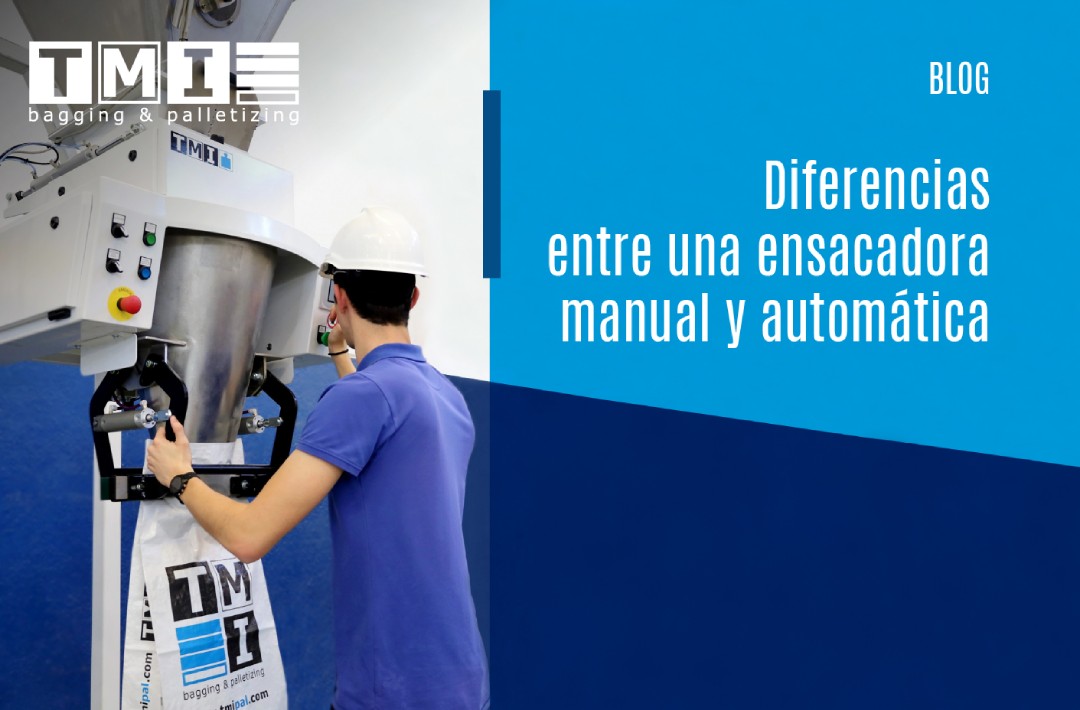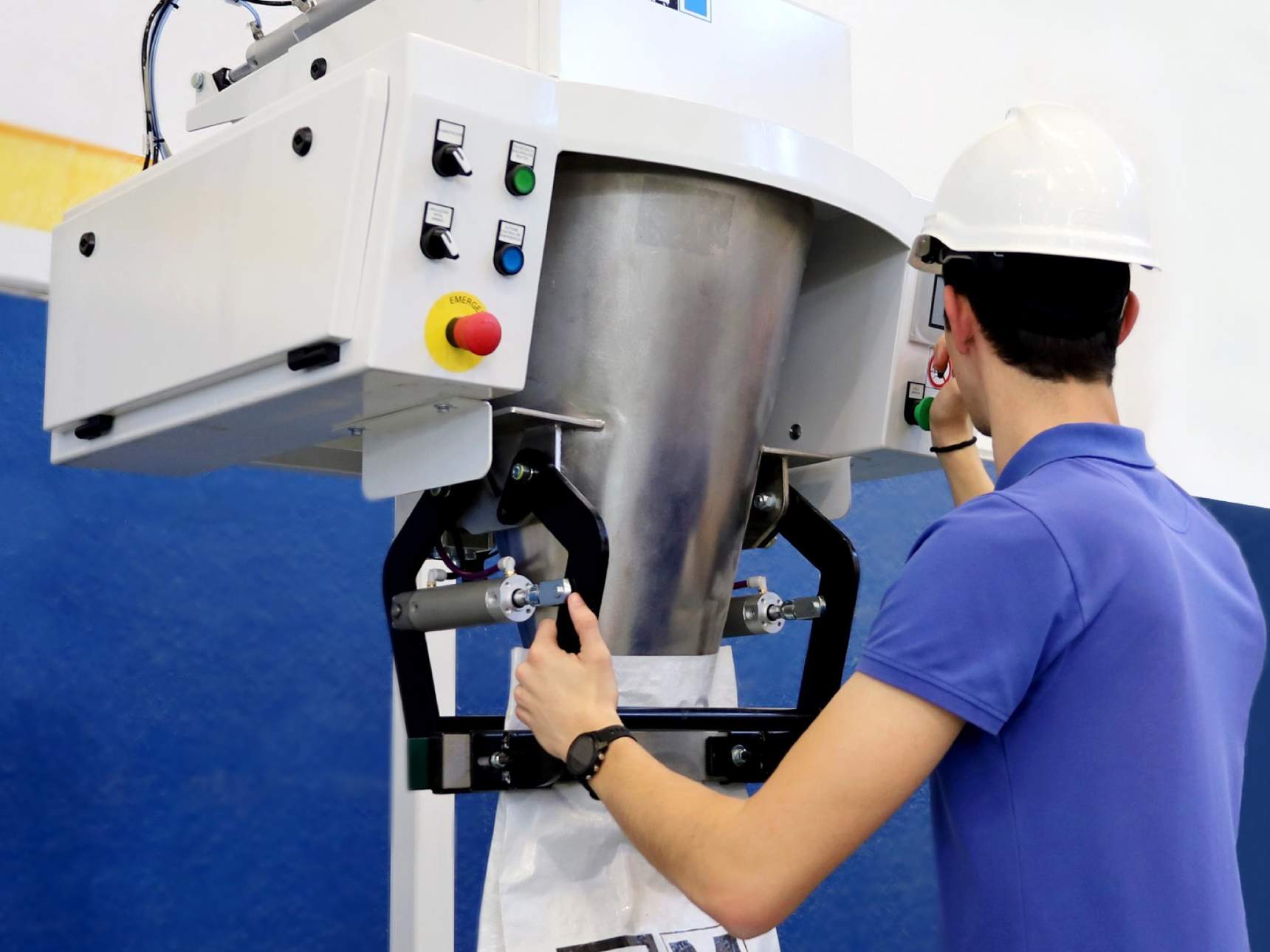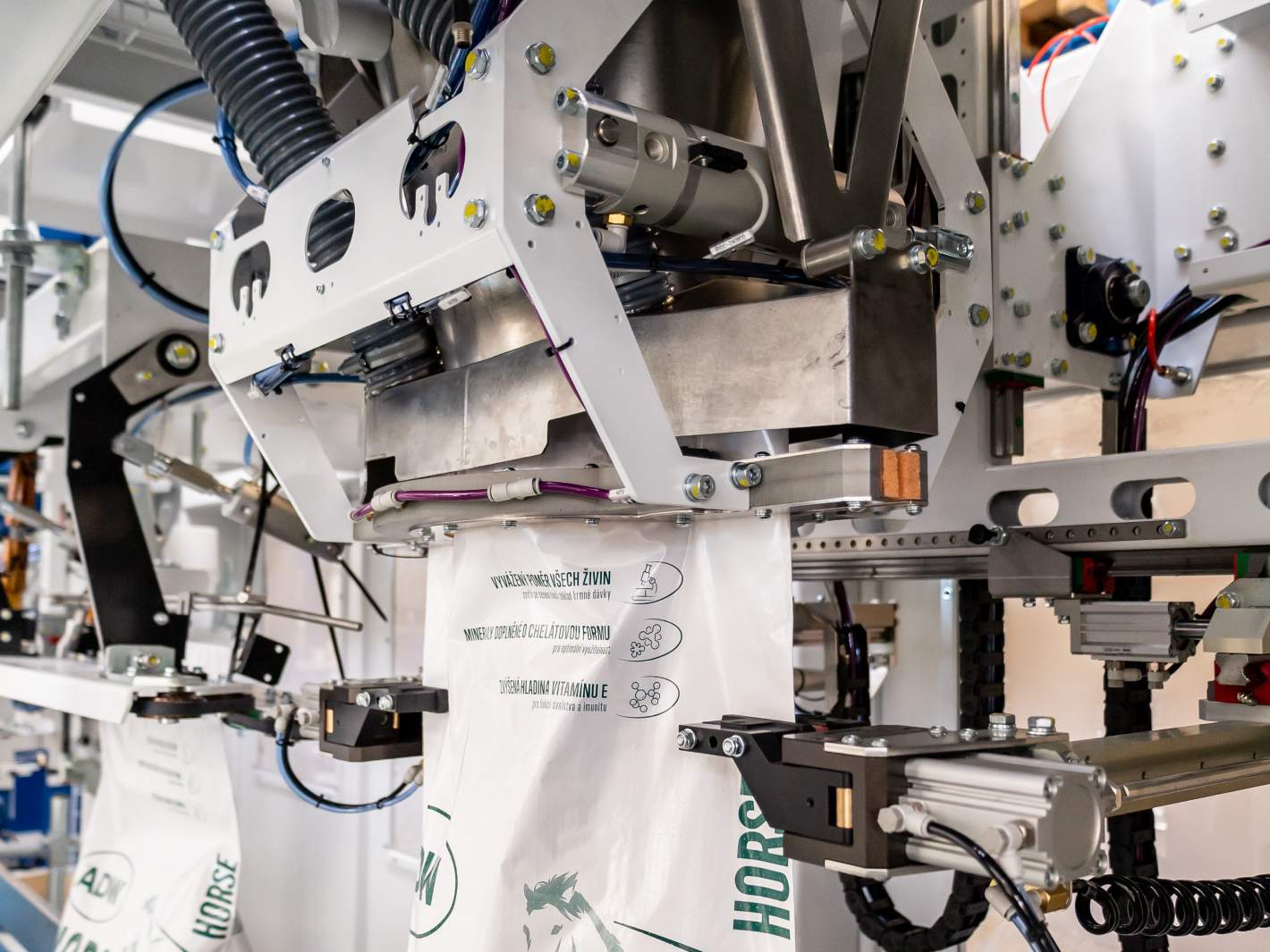
-
Company
-
We talk your language
TMI is your partner for bagging, palletizing and stretch-wapping systems.
- About us
- Talented people
- News
-
-
Solutions
-
Complete bagging lines
TMI manufactures complete bagging lines: from the dosing of the finished product to the protection of the load. We supply bagging machines, palletizers and stretch-wrapping systems that suit your needs. Browse through our portfolio and find the optimal solution for your end of line.
- Bagging systems
- Bag palletizing systems
- Pallet stretch-wrapping
- Industry 4.0
-
-
Industries
-
Solutions that fit your project
We develop bagging and palletizing solutions for different industries. Choose yours to see the solutions that best suit your needs.
- Food
- Agri-food
- Chemicals & petrochemicals
- Construction & mining
- Recycling
-
- Services
- Contact
- Ask for a quotation
-
Company
-
We talk your language
TMI is your partner for bagging, palletizing and stretch-wapping systems.
-
-
Solutions
-
Complete bagging lines
TMI manufactures complete bagging lines: from the dosing of the finished product to the protection of the load. We supply bagging machines, palletizers and stretch-wrapping systems that suit your needs. Browse through our portfolio and find the optimal solution for your end of line.
-
-
Industries
-
Solutions that fit your project
We develop bagging and palletizing solutions for different industries. Choose yours to see the solutions that best suit your needs.
-
- Services
- Contact
We talk your language
News
Differences Between Manual and Automatic Bagging Machines: How to Choose the Best Option
October 29, 2024
When dealing with bulk products and their packaging, the choice between a manual or automatic bagging machine can significantly impact the end of the production line.

When dealing with bulk products and their packaging, the choice between a manual or automatic bagging machine can significantly impact the end of the production line. Depending on each product and its technical requirements (different batch sizes, cleaning requirements, sealing needs, etc.), along with other investment and return criteria, choosing between a manual or automatic bagging machine is not always an easy decision.
Each type of bagging machine has advantages that can benefit different types of businesses. At TMI, we have extensive experience in the development, installation, and maintenance of industrial bagging machinery. We understand our clients' needs and guide them in making this decision. This article will help you identify the ideal option for you.
Why Is It Important to Choose the Right Bagging Machine?
Selecting the appropriate bagging machine directly impacts productivity, operational costs, and your processes' adaptability. Depending on the degree of personnel intervention, bagging machines can be categorized as automatic (with minimal human intervention - supervision) and manual or semi-automatic (with human intervention at some point).
While logic might dictate that an automatic bagging machine should be the preferred option, various factors should be considered before making a decision. Below, we summarize the most important characteristics and advantages of each type of bagging machine.
Manual or Semi-Automatic Bagging Machines: Characteristics and Advantages
A manual or semi-automatic bagging machine requires human intervention, for example, to position bags, manually start filling cycles, and/or remove filled bags. These machines are responsible for weighing, dosing, and inserting the product into the bag based on the specified requirements, recording production data (products, weight, productivity in bags/hour, etc.).

Advantages of Manual Bagging Machines
- Lower Initial Cost: These machines have a lower initial investment compared to automatic ones, making them an attractive option for companies with tight budgets.
- Complete Process Control: Human intervention allows greater control at each stage, ideal for operations needing immediate flexibility or adaptability.
- Versatility and Flexibility: Perfect for smaller-scale operations or those requiring frequent configuration changes.
- Simple Start-Up: Installing this machinery is faster and simpler, usually requiring minimal training for staff to operate it.
- Easy Cleaning and Maintenance: Cleaning and maintenance tasks are generally quicker on these machines.
When Is It Better to Choose a Manual Bagging Machine?
Manual bagging machines are flexible machines that can be used in various processes to bag products weighing between 5 and 50 kg. They are recommended for:
- Industries processing small, varied batches with frequent recipe changes.
- Industries with small or medium production volumes or those just starting out.
- Industries with plenty of available labor.
- Situations with limited budgets.
- Limited space for installation.
TMI offers a wide range of semi-automatic bagging machines. Here are some models: ILERFIL AB, ILERFIL ABS, ILERFIL AN, ILERFIL VBG, and ILERFIL VBF.
Automatic Bagging Machines: Characteristics and Advantages
Automatic bagging machines, on the other hand, handle the entire bagging process automatically, from loading to sealing the bag, with minimal human intervention, limited to start-up, supervision, or replenishment of consumables. In other words, they perform the same function, but in this case, all operations are automated: bag placement, dosing, filling, sealing, removal, and even palletizing.
As expected, the technology used in automatic bagging machines is more advanced than in manual ones and may include features like a hopper vibration system to prevent sticky products (such as additives with high-fat content) from adhering; different sealing or closing systems (sewing, heat-sealing, cutting and sealing, etc.); or even bag preparation from a roll.

Advantages of Automatic Bagging Machines
- High Production Capacity: These machines are designed to handle large volumes quickly and efficiently.
- Reduction of Human Errors: Process automation minimizes errors and ensures greater consistency in the final product.
- Long-Term Efficiency: Although the initial investment is higher, reduced labor costs and increased production offer a faster return on investment.
- Bag Positioning: These machines allow total control over bag positioning and optimal closure.
- Cleaner Environment: The workspace remains cleaner and safer.
- Less Need for Personnel: Only general supervision of the system and consumable replenishment are required.
- More Packaging Variety: Automatic bagging machines handle different types of bags and materials: flat bags or gusseted bags, paper, polyethylene, or woven polypropylene (WPP) bags, SOS bags, valve bags, FFS (Form-Fill-Seal) bags, etc.
When Is It Better to Choose an Automatic Bagging Machine?
This type of bagging machine is ideal for:
- Industries with large volumes of continuous production.
- Companies where labor is a limited resource.
- Industries requiring an optimal packaging finish.
- Situations aimed at reducing labor costs in the long term and/or improving return on investment.
At TMI, we offer automatic bagging machines for different types of bags: open-mouth baggers, SOS baggers, valve baggers, and FFS baggers.
Manual or Automatic Bagging Machine: Which Is Better for You?
Here are the main factors you should consider when choosing the best type of bagging machine for your company:
- Production Volume: If your operation handles low or medium volumes, a manual bagger may be sufficient. For high volumes and continuous production, the automatic option is most suitable.
- Budget: Manual bagging machines are more accessible in terms of initial investment, while automatic ones offer a higher return in the long term due to their ability to optimize production.
- Maintenance: Automatic machines require more specialized maintenance, but at TMI, we offer maintenance plans tailored to your needs to ensure your machinery operates at peak performance at all times.
- Scalability: If your company is growing, an automatic bagger will allow you to adapt to future production needs without requiring significant additional investment in machinery.
- Available Space: A key factor is the space you have at the end of the line to deploy the bagging system, as automatic machines generally require more space.
- Available Workforce: Do you have ample labor available in your plant, or is it a scarce resource? If you don't have much staff, the option to invest in automation is appealing.
At TMI, we help you make the right decision.
The choice between a manual and an automatic bagging machine depends on various factors and can be a complex decision. At TMI, we are here to offer you expert advice. With decades of experience helping businesses of all sizes decide on the appropriate machinery for their bagging processes, we’re here to help.
For more information or advice, contact us without obligation.
Next article
December 27, 2024
In the markets of North America, Central America, and some South American countries, UL certification is an essential requirement for manufacturers of electrical components.

TMI Técnicas Mecánicas Ilerdenses SL in the framework of the ICEX Next Program, has been supported by ICEX and co-financed by the European ERDF fund. The purpose of this support is to contribute to the international development of the company and its environment.

TMI, en el marco del Ministerio de Industria y Turismo, ha desarrollado un proyecto titulado 'Implementación de mejoras integrales a los procesos, calidad y trazabilidad de TMI', subvencionado por dicho ministerio y financiado por la Unión Europea a través de Next Generation EU, en el marco de la convocatoria de apoyo financiero a planes de innovación y sostenibilidad en el ámbito de la industria manufacturera 2022.

Company
Address
Polígono Industrial Camí dels Frares,
C/ Alcarràs, parc 66 - 25190 - Lleida · SPAIN Tel.
+34 973 25 70 98







